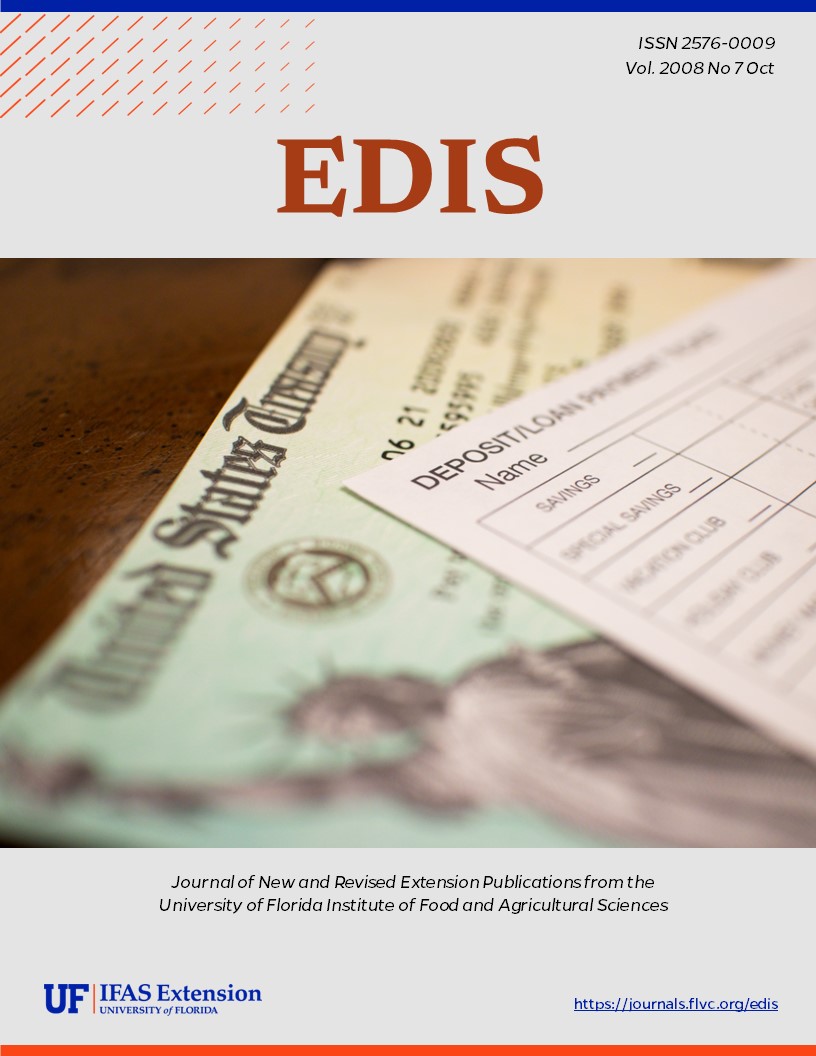Abstract
EENY-440, a 6-page illustrated fact sheet by Stephanie Larrick and Roxanne Connelly, is part of the Featured Creatures Collection. It describes this large, densely haired fly native to Central and South America, which, in its larval stage, infests the skin of mammals causing painful pustules, a condition known as myiasis. Includes references. Published by the UF Department of Entomology and Nematology, September 2008.
References
Acha P, Szyfres B. 1994. Zoonoses and communicable disease common to man and animals. 2nd Edition. Scientific Publication No. 503. Pan American Health Organization. WHO, Washington, D.C. 963 pp.
Cornet MM, Florent A, Lefebvre C, Wertheimer CP, Bangs M, Bouvet A. 2003. Tracheopulmonary myiasis caused by a mature third-instar Cuterebra larva: case report and review. Journal Clinical Microbiology 41: 5810-5812. https://doi.org/10.1128/JCM.41.12.5810-5812.2003
Diaz JH. 2006. The epidemiology, diagnosis, management, and prevention of ectoparasitic diseases in travelers. Journal of Travel Medicine 13: 1195-1982. https://doi.org/10.1111/j.1708-8305.2006.00021.x
Fernandes FF, Linardi PM, Chiarini-Garcia H. 2002. Morphology of the antenna of Dermatobia hominis (Diptera: Cuterebridae) based on scanning electron microscope. Journal of Medical Entomology 39: 36-43. https://doi.org/10.1603/0022-2585-39.1.36
Fernandes FF, Chiarini-Garcia H, Linardi PM. 2004. Scanning electron microscopy studies of sensilla and other structures of adult Dermatobia hominis (L. Jr., 1781) (Diptera:Cuterebridae). Journal of Medical Entomology 41: 552-560. https://doi.org/10.1603/0022-2585-41.4.552
Haruki K, Hayashi T, Kobayashi M, Katagiri T, Sakurai Y, Kitajima T. 2005. Myiasis with Dermatobia hominis in a traveler returning from Costa Rica: review of 33 cases imported from South America to Japan. Journal of Travel Medicine 12: 285-288. https://doi.org/10.2310/7060.2005.12509
Kahn DG. 1999. Myiasis secondary to Dermatobia hominis (Human Botfly) presenting as a long-standing breast mass. Archives of Pathology and Laboratory Medicine 123: 829-831. https://doi.org/10.5858/1999-123-0829-MSTDHH
Lawson RD, Rizzo M. 2005. Digital infestation with the human bot fly. Journal of Hand Surgery 30B: 490-491. https://doi.org/10.1016/j.jhsb.2005.04.015
Lang T, Smith DS. 2003. Wiggling subcutaneous lumps. Clinical Infectious Diseases 37: 2087-2088. https://doi.org/10.1086/377307
Liebert PS, Madden RC. 2004. Human botfly larva in a child's scalp. Journal of Pediatric Surgery 39: 629-630. https://doi.org/10.1016/j.jpedsurg.2003.12.035
Maier H, Honigsmann H. 2004. Furuncular myiasis caused by Dermatobia hominis, the human bot fly. Journal of the American Academy of Dermatology 50: S26-S30. https://doi.org/10.1016/S0190-9622(03)01488-9
Matera G, Liberto MC, Larussa F, Barreca GS, Foca A. 2001. Human myiasis: an unusual imported infestation in Calabria, Italy. Journal of Travel Medicine 8: 103-104.
Marinho CR, Barbosa LS, Granthon de Azevedo AC, de Carvalho Querizo MM, Valgode MA, Aguiar Coelho AM. 2003. Hemilucilia segmentaria (Fabricius, 1805) (Diptera: Calliphoridae) as new biological vector of eggs of Dermatobia hominis (Linnaeus Jr., 1781) (Diptera: Oestridae) in Reserva Biologica do Tingua, Rio de Janeiro, Brazil. Memórias do Instituto Oswaldo Cruz 98: 937-938. https://doi.org/10.1590/S0074-02762003000700013
Marty FM, Whiteside KR. 2005. Myiasis due to Dermatobia hominis (Human Botfly). New England Journal of Medicine 23: 352. https://doi.org/10.1056/NEJMicm041049
Millikan LE. 1999. Myiasis. Clinical Dermatology 17: 191-195. https://doi.org/10.1016/S0738-081X(99)00011-5
Pereira MCT, Leite VHR, Leite ACR. 2001. Experimental skin lesions from larvae of the bot fly Dermatobia hominis. Medical and Veterinary Entomology 15: 22-27. https://doi.org/10.1046/j.1365-2915.2001.00273.x
Rossi MA, Zucoloto S. 1973. Fatal cerebral myiasis caused by the tropical warble fly, Dermatobia hominis. American Journal of Tropical Medical Hygiene 22: 267-269. https://doi.org/10.4269/ajtmh.1973.22.267
Rutledge CR, Day JF. 2008. Mosquito Repellents. EDIS. http://edis.ifas.ufl.edu/IN419 (30 June 2008).
Safdar N, Young DK, Andes D. 2003. Autochthonous furuncular myiasis in the United States: case report and literature review. Clinical Infectious Diseases 36: e73-80. https://doi.org/10.1086/368183
Saliba EK, Oumeish YO, Oumeish I. 2002. Epidemiology of common parasitic infections of the skin in infants and children. Clinical Dermatology 20: 36-43. https://doi.org/10.1016/S0738-081X(01)00239-5
Sampson C E, MaGuire J, Eriksson E. 2001. Botfly myiasis: case report and brief review. Annals of Plastic Surgery 46: 150-152. https://doi.org/10.1097/00000637-200102000-00011
Schwartz E, Gur H. 2002. Dermatobia hominis myiasis: an emerging disease among travelers to the Amazon Basin of Bolivia. Journal of Travel Medicine 9: 97-99. https://doi.org/10.2310/7060.2002.21503
Tamir J, Haik J, Orenstein A, Schwartz E. 2003a. Dermatobia hominis myiasis among travelers returning from South America. Journal of the American Academy of Dermatology 48: 630-632. https://doi.org/10.1067/mjd.2003.37
Tamir J, Haik J, Schwartz E. 2003b. Myiasis with Lund's fly (Cordylobia rodhaini) in travelers. Journal of Travel Medicine 10: 293-295. https://doi.org/10.2310/7060.2003.2732
Villarino M A, Garcia O, Fussell W, Preston K, Wagner GG. 2003. An initial survey of the cattle grub Dermatobia hominis (L. Jr.) in Nicaragua. Preventive Veterinary Medicine 61: 333-338. https://doi.org/10.1016/j.prevetmed.2003.08.006

